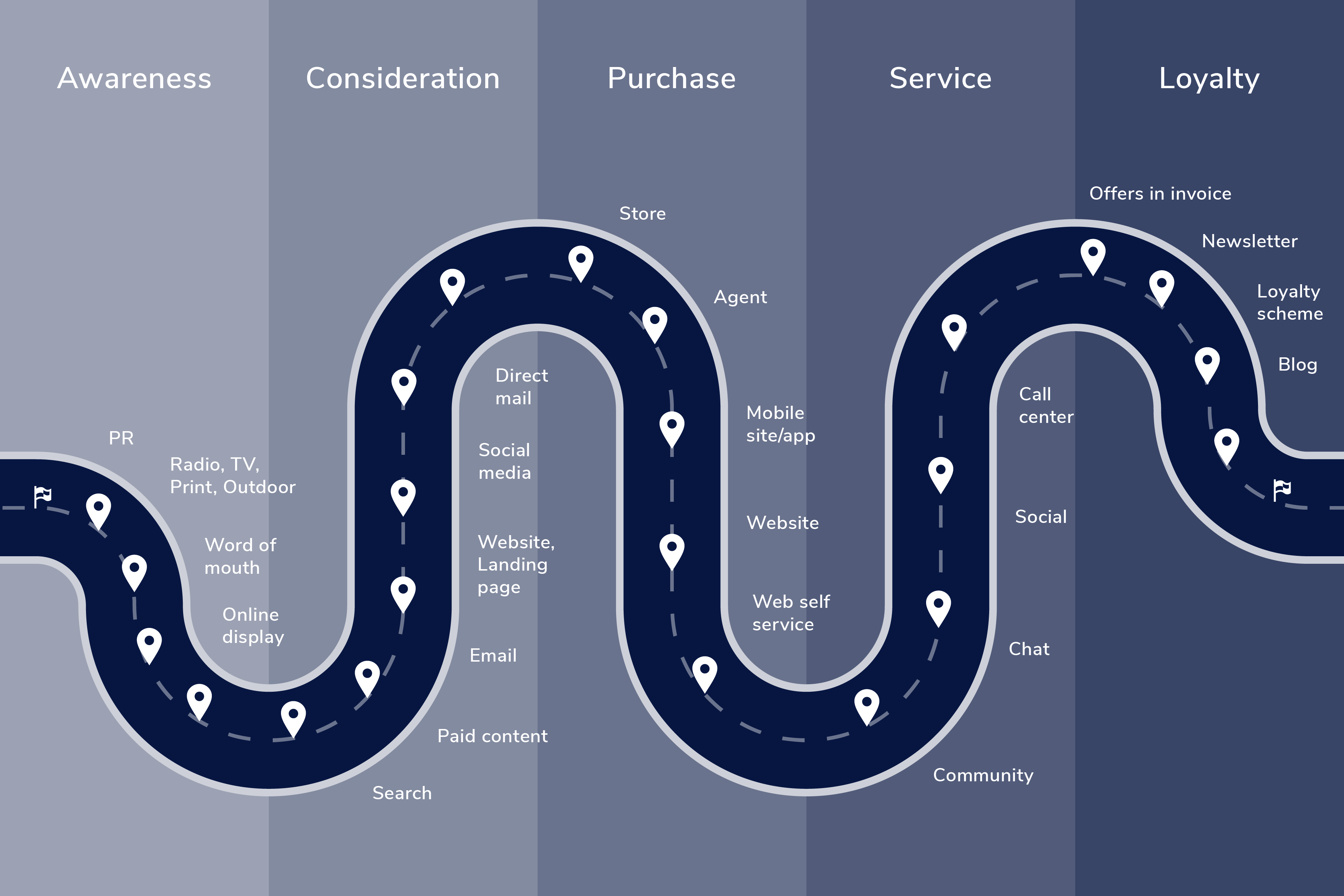
After our article last week “Customer Experience, what is it?” we had a lot of people ask what a customer journey map was. You asked, so here’s your answer.
Today a strong focus for your business should be on your on the customers and your business relationship with them. Customers expect a seamless experience from a brand, from start to finish. You are missing opportunities if attention is not being given to your entire CX process.
One example of a massively important part of customer experience is around the expectation of businesses to remember customers preferences and habits so that they can have a personalised shopping experience.
It is important to provide a strong customer experience from the get-go. To do so, you not only have to focus on your customer experience, but you also have to understand your target audience. So before you dive into mapping experiences learn as much about your customers as possible.
Developing a customer journey map is one of the most beneficial ways that you can understand the touch points and interactions that a customer experiences with your business. By focusing on this aspect, you can easily ensure that you are offering the best customer experience.
Now, first things first, if you have never used one before, you probably won’t have any idea about how to make a customer journey map. Below is an extreme example of a map with a vast array of customer touch-points. You may find you have all of these or not even half.

As you can see, it’s all about making sure that your customer gets from Point A to Point C without skipping Point B or having to deal with an unnecessary step such as Point B2.
Don’t be too quick to apply the very same map to your business. No two customer journey maps can be the same. The way your business runs, target market, demographic data and more will make a difference here. So, if you’re making one, you should focus on the following:
+ Have a buyer persona – This is a persona you make about your ideal buyer/s from your target market. Give them a name, age, occupation and also try to figure out their habits.
+ Understand the buyer’s goals – What goals do your buyers have behind purchasing with you? Are you offering the best price? Service? Tech? etc.
+ Be aware and note all of your buyer touch-points – Touch-points relate to any interaction your buyers have with your brand. This can be through ads, newsletters or more.
+ Mark journeys taken by your persona – Separate your discovered touch-points and create journeys each of your personas can take.
By paying attention to these factors, you can easily start to develop a map that can be a valuable addition to your marketing, designs and brand strategy as well.
Once you’ve created the map/s here’s how to use it.
+ Know the pain points – What’s annoying the customers? Are they finding your web design too confusing? What’s causing cart abandonment and other problems?
+ Stop the pain – Plan and action how you will fix this pain points making for a seamless experience. This may be updating your website design, retraining a telesales team, or replanning a targeting campaign.
+ Fix any roadblocks – Take a look at the bigger picture to fix and detect any future roadblocks.
+ Update and make improvements – Always update your customer journey maps in accordance with new advancements. A change in target markets or buyer behaviour should be reflected here.
Using the map is not difficult as well and you should follow the same steps you’re using to make it.
Creating a map gives you the opportunity to step back and really put yourself in your customers shoes. As a form of investment, dedicating your attention to this map, and then perfecting the roadblocks and pain points, will give your a far greater return than investing in singular, pigeon holed projects.
If you would like to talk more about your brand or other things you may need advice on in your business, don’t hesitate to call us or drop us an email.